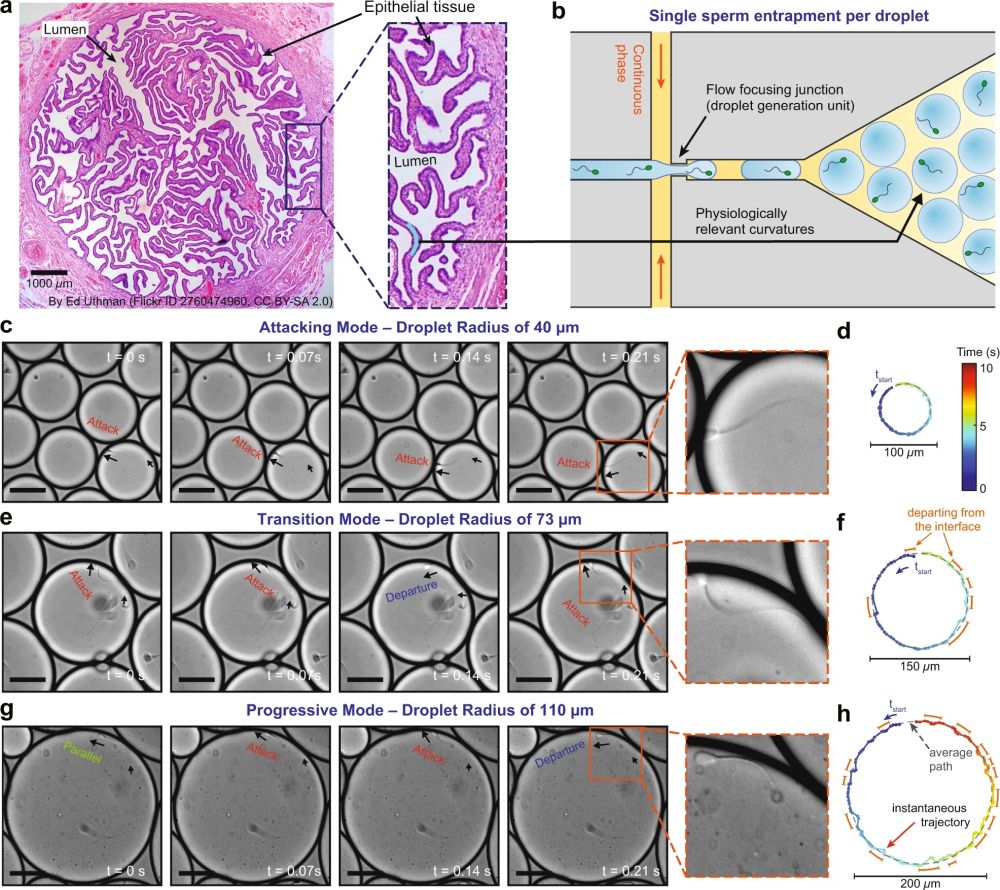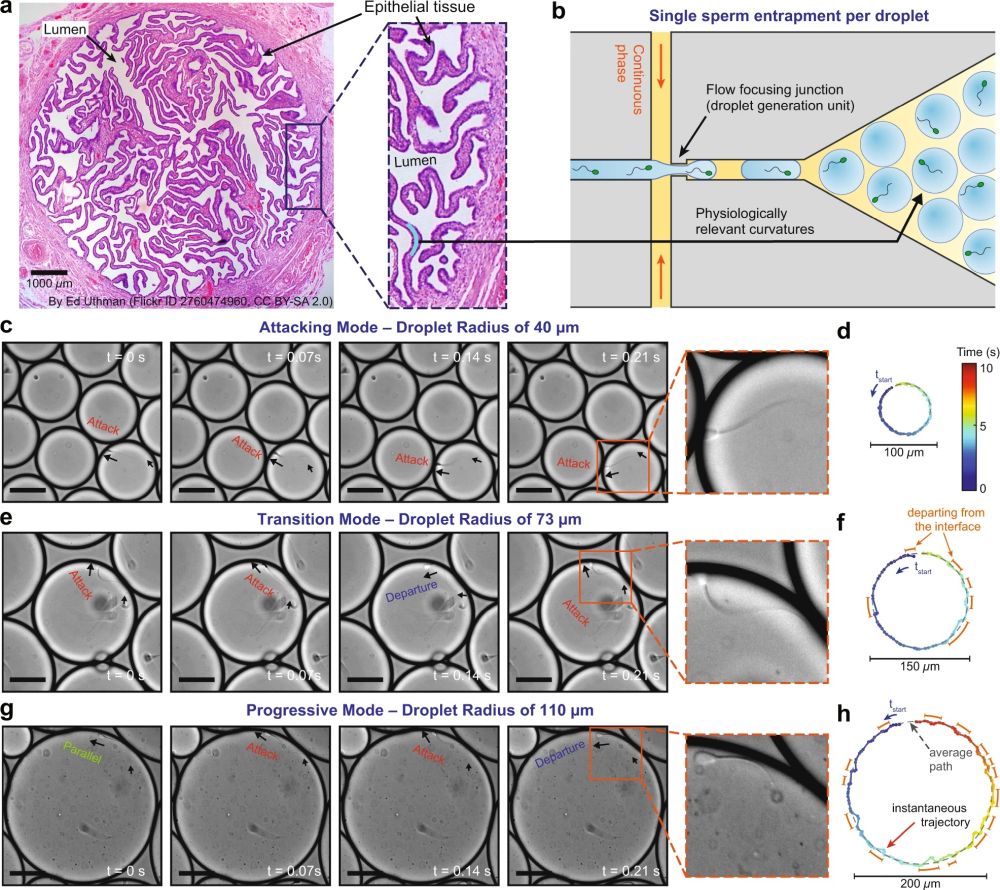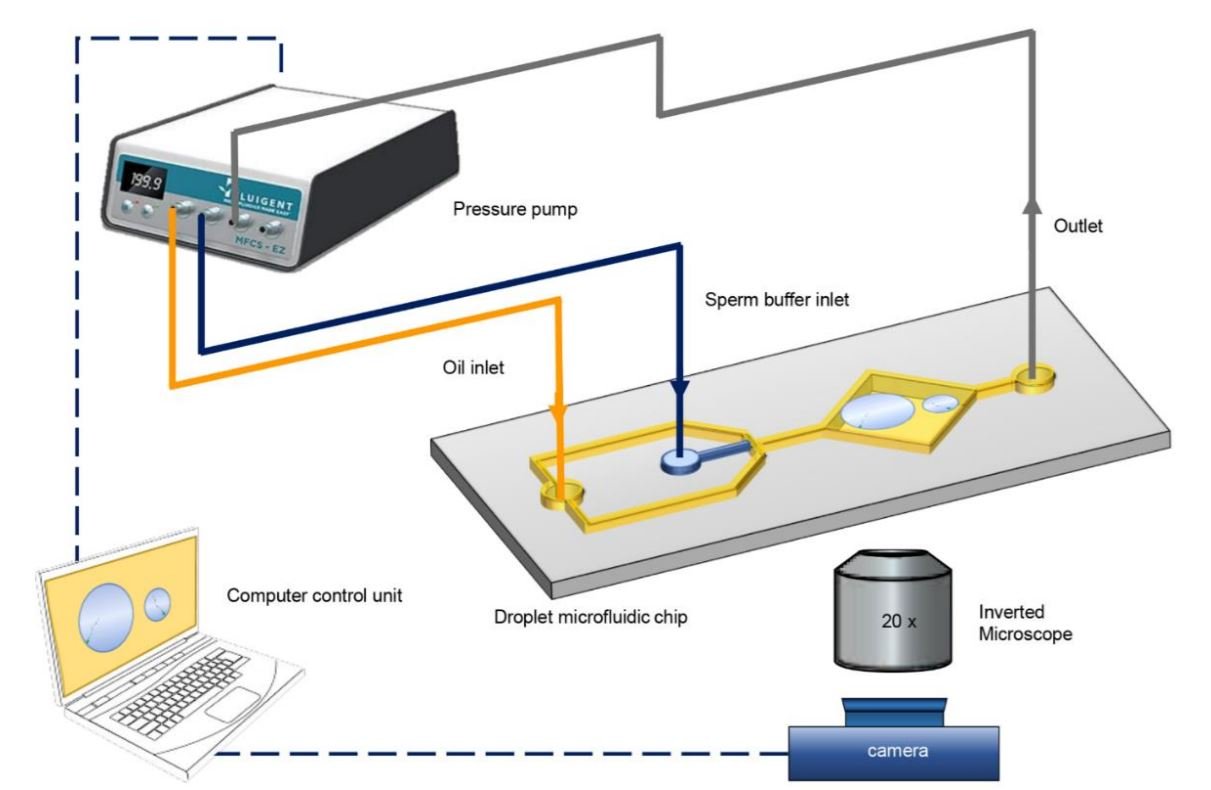
18 Jun Droplet microfluidic shines light on the sperm–surface interactions in the reproductive tract
How does a tiny sperm find its way through the female reproductive tract which is highly complex? The fallopian tube is covered with a labyrinthine epithelium layer that plays an important role in the natural selection of the sperm. How does all that curvature affect the dynamics of the sperm behavior? How does the interaction of the sperm with the epithelial surface provide geometrical guidance for the sperm? An international research team in a recent article published in Nature Communications addresses these questions by employing a microfluidic chip.
“To study the influence of this labyrinthine complexity on sperm behavior, we use droplet microfluidics to create soft curved interfaces over a range of curvatures corresponding to the in vivo environment. We reveal a dynamic response mechanism in sperm, switching from a progressive surface-aligned motility mode at low curvatures (larger droplets), to an aggressive surface-attacking mode at high curvatures (smaller droplets of <50 μm-radius).”, the authors explained.

Reproduced under Creative Commons Attribution 4.0 International License. Raveshi et al., Nat. Commun., 2021.
Droplet microfluidics is an area of microfluidics in which droplet microfluidic devices are used to generate and manipulate micron-sized droplets at kHz frequencies. Droplet microfluidics is often used for microfluidic single-cell analysis as well as microparticle synthesis. Droplet microfluidics is well-suited for this study since the sperm can experience highly curved surfaces inside the droplets which helps to mimic highly curved and labyrinthine in vivo conditions. Additionally, the droplets help with recapitulating the mechanical properties of the female fallopian tube. The sperm naturally travels over a soft surface which can be experienced using the more physiologically relevant liquid-liquid interfaces of the droplets.

Reproduced under Creative Commons Attribution 4.0 International License. Raveshi et al., Nat. Commun., 2021.
In order to encapsulate the sperms, a PDMS-based flow-focusing droplet microfluidic chip with a height of 62 µm and a nozzle junction of 100 µm was microfabricated used by the research team. The microfluidic chip was used to generate 30 µm to 140 µm droplets. Various droplet diameters account for various curvatures that the sperm encounters in the fallopian tube. The sperms were then imaged for 12 seconds inside the droplets and their behavior in the presence of different curvatures were observed.
“Taken together, these findings show that the increasing geometrical complexity of the female fallopian tube alters sperm motion to guide the locomotion at lower curvatures but to increase and prolong surface contact at higher curvatures, enabling sperm capacitation and fertilization closer to the site of fertilization. These finding also provides additional insights into how surface curvature can be used to guide the locomotion for sperm selection applications or to increase surface interactions for understanding sperm attachment/detachment mechanisms.”, the authors concluded.
Read the original article: Curvature in the reproductive tract alters sperm–surface interactions

Pouriya Bayat
Pouriya is a microfluidic production engineer at uFluidix. He received his B.Sc. and M.A.Sc. both in Mechanical Engineering from Isfahan University of Technology and York University, respectively. During his master's studies, he had the chance to learn the foundations of microfluidic technology at ACUTE Lab where he focused on designing microfluidic platforms for cell washing and isolation. Upon graduation, he joined uFluidix to even further enjoy designing, manufacturing, and experimenting with microfluidic chips. In his free time, you might find him reading a psychology/philosophy/fantasy book while refilling his coffee every half an hour. Is there a must-read book in your mind, do not hesitate to hit him up with your to-read list.


